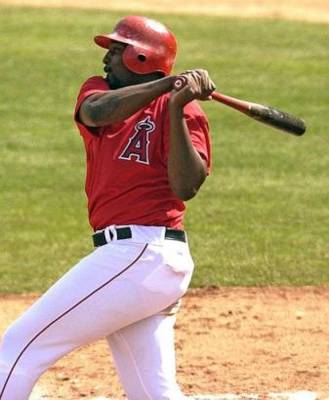Minnesota Twins' left-hander Johan Santana won the American League Cy Young Award for 2004.

Should the Twins be worried?
Specifically, should Santana, the Twins and Minnesota fans be worried that Santana will see a significant drop in performance next year?
In a word? You bet your bippy!
Let me introduce you to a couple of friends of mine:
Year G CG IP H HR BB SO W L ERA
CYA 33 6 236 189 16 63 248 21 6 2.67
Johan 34 1 228 156 24 54 265 20 6 2.61
CYA+1 27 3 181 152 16 58 173 13 7 3.33
CYA is an average of the last nine American League Cy Young Award winners, from 1995 to 2003, a line almost eerily similar to Santana's performance this year, which is the second line. The third line, CYA+1, is the average performance of these 1995-2003 AL Cy Young Award winners in the year immediately after they won the award. Fewer starts, fewer innings, fewer wins, a higher ERA, a lower strikeout rate and higher walk and home-run rates. Not a terrible line, by any means, but a huge drop in performance, on average.
I only used the 1995-2003 seasons because the severely-strike-shortened 1994 season would have thrown things off a bit. But if you look back at the half-dozen or so AL Cy Young winners before 1994, many of them exhibited a marked drop in performance the next year as well. Jack McDowell, Bob Welch, Bret Saberhagen, Frank Viola, LaMarr Hoyt and others have all had a pretty tough time following up their own acts. I only used the American League because the National League Cy Young Award winners have not shown the same drop off, most of them repeating as winners at least once (Greg Maddux, Randy Johnson). I also stayed away from the NL because a relief pitcher screws up the averages a lot too, even a relief pitcher who strikes out 137 batters.
What's it all mean? (Surprise!) I don't really know. A lot of it is probably just a simple regression to the mean. In other words, what goes up must come down, or in the case of ERA, the reverse. But it's troubling. Mostly, it's troubling because even though Santana doesn't pitch for my favorite team, it's still a lot of fun to watch him make mincemeat out of his opposition, and I'd hate to think that he's doomed to something like a 13-8 record with an ERA around 4.00 next year.
Furthermore, at least since the three-division format started, only two teams boasting a Cy Young winner in one season have made the playoffs the following year with that pitcher on the roster. One was Roger Clemens, who won the Award in 2001 with New York, and the other was Barry Zito, whose A's teammates won their division in 2003 even though he won only 14 games in his encore to his 23-win 2002 season.
Randy Johnson won the Award in 1995, and the Mariners missed the playoffs in '96 as the Big Unit pitched only 61 innings. Toronto had three straight Cy Young Awards from 1996-1998, but still hasn't seen postseason play since they won it all in 1993. Roger Clemens, the recipient of the 1998 award, had to change teams to get to the postseason, which he did with the Yankees in 1999, winning his forst World Series. This remains the only AL team to win it all with a reigning Cy Young winner on the roster. Pedro Martinez won it in 1999 and 2000, but the Red Sox missed the playoffs in both 2000 and 2001. Roy Halladay won it last year, and the Blew Jays did just that as they finished dead last in the AL East in 2004, worse than the Devil Rays! For shame!
Thankfully we've seen a lot of trends bucked this year:
*The Red Sox' World Series drought,
*That Washington Redskins-losing/incumbent-political-party-losing thing,
*Hollywood finally dropping the sequel/remake crap and going back to making good, original films
...wait a minute, I may have dreamed that last one. Anyway, we now know that History doesn't always dictate the future, and that those pitchers' declining performances were actually caused by a gnome or small dwarf living in their stomachs. No, wait, that was just Kevin Brown.
So let's all hope that Johan Santana can excise his demons, or gnomes, and beat the Curse of the AL Cy Young.






